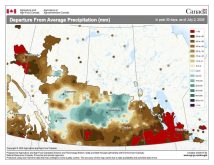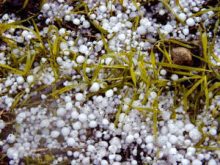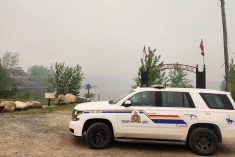Lately I seem to have a lot of topics to discuss. For example, it seems like this winter was one of the shortest on record. This should be an easy question to answer, but it is not. What defines winter? Is it a certain range of temperatures? Snow on the ground? Or, as my son pointed out, how long was he able to skate on our hockey rink? I will have to take some time to dig into this one, so look for it sometime in the next few weeks.
Read Also

June brings drought relief to western Prairies
Farmers on the Canadian Prairies saw more rain in June than they did earlier in the 2025 growing season
The second topic of interest which seems to be popping up more and more is when do we start worrying about the drought that several areas are now experiencing? After a dry summer and fall, the lack of snow cover this winter in many areas has resulted in very little soil moisture recharge this spring.
Thankfully, the slow melt has meant that nearly all the meltwater has been absorbed rather than running off, but this has resulted in other problems — namely the recharge of surface-water ponds. At my place, this may be the first year since I moved in 20 years ago that my pond will not be recharged with surface run-off. Good news is, there is still plenty of time for us to receive significant precipitation that will turn everything around — but if we do not, then we could be in real trouble.
Outpost reports
A third topic that came to mind, as I walked around my back field in my runners instead of rubber boots, was some of the course work I did with Dr. Alan Catchpole at the University of Manitoba back when I was working on my master’s degree. In one particular course, we examined Hudson’s Bay Company post journals, looking for anecdotal information to try and reconstruct temperature and precipitation records. Often the post journals would go into great detail about weather conditions, but instrument readings would be missing. By reading through the journals, Dr. Catchpole was able to determine approximate temperatures and precipitation amounts using anecdotal evidence, such as comments about water dripping off roofs, conditions of the snowpack, when they were able to travel by river or if ice conditions were too dangerous, to name just a few.
This got me thinking about some of the comments I was making about the conditions outside that could be interpreted using the same procedure. For example, it was early March and I was able to walk on the grass in the back field without having to worry about standing water. From this, one can determine that precipitation must have been light over the winter and temperatures have been warm enough to melt any snow cover that was there. Feel free to share any of your anecdotal evidence that you have observed this winter and spring and I will be sure to share some of your observations in an upcoming issue. You can email me at [email protected].
Data sharing
Now on to the final part of my initial review of the Ambient Weather WS-5000 station. In the last issue I went over some of the pros and cons of the station and so far, I have been impressed with the ease of setup and accuracy of the readings. Also, I am impressed that once it was set up and working, there have been no drops in the data, at least when I wasn’t playing around with the location of the sensors. Once the ground has thawed, I will test the distances from which the different sensors can reliably work.
In this issue I want to spend just a little bit of time looking at the ecosystem that Ambient Weather supplies for sharing and accessing your weather station data, at AmbientWeather.net. When you set up your station, you need to create an account. Once that is done, you go into your station’s setup and pull out something known as a MAC address. This information is then entered into your device’s area of your Ambient online dashboard and you are now good to go. If your station is connected to your home Wi-Fi network, the data will be uploaded to the AmbientWeather.net website. This is the only way you can access your data remotely. This can be either a good thing or bad, depending on how you view it. If you are not a “techie,” then this is probably a good thing. The website is designed for you and looks nice, even if you cannot personalize it very much.
That is one of the biggest issues I have with the website: the lack of ability to customize how things look. You are pretty much stuck with the colour and how each “tile” looks. The only thing you can do, at the moment, is to play around with the order of the tiles, and even that is a pain in the you-know-what. You can select which units you want your different readings in, but that also seems to have issues, especially wind and pressure. If you have checked out my updated website, you may have noticed the wind speed and pressure readings sometimes show m/s (metres per second) and mmHg (millimetres of mercury) instead of km/h and hPa (hectopascals). I’ve been in discussion with Ambient Weather about this and it is “still looking into it.” I also asked why it offers pressure in hPa but doesn’t have kPa (kilopascals). The answer is it is not planning to add kPa. OK, I can live with that — it’s only one decimal place.
If you want to do “more” with your weather station — such as have your own personal website that shows the WS-5000 data the way you want, rather than just embedding the data provided (like I do on my site) — then you will have to install a third-party weather program such as Weather Display or write your own API code to fetch the data and then display it how you wish.
That’s all I have room for; I will keep you posted over the next few months about how the weather station is performing.




















